Do you have a big vision for your company that seems unattainable?
That’s a long-term goal that can seem pretty overwhelming at first glance.
Fortunately, setting manageable, short-term goals for yourself and your team can help ensure that you not only achieve your long-term vision but also reach optimal levels of productivity along the way.
But what exactly are short-term goals, and how are they different from long-term goals? And how do you strategically set them?
In this article, we’ll look at short-term goals and how they can help your employees and business achieve success. We’ll also show you how to set and measure short-term goals and give you a list of 30 examples to use as inspiration.
What are short-term goals?
Short-term goals are specific objectives you want to achieve in the near future or in a relatively short period of time.
In the context of running your business, short-term goals focus on helping your business succeed in several areas, including finances, client satisfaction, and output.
Setting short-term goals (that take a few days, weeks, or months to complete) and breaking them down into bite-sized tasks will give your team the direction they need to finish larger projects on time and deliver top quality.
What’s the difference between goals and aspirations?
While goals and aspirations may seem very similar and are often used synonymously, there are some key differences that make goals more useful than aspirations.
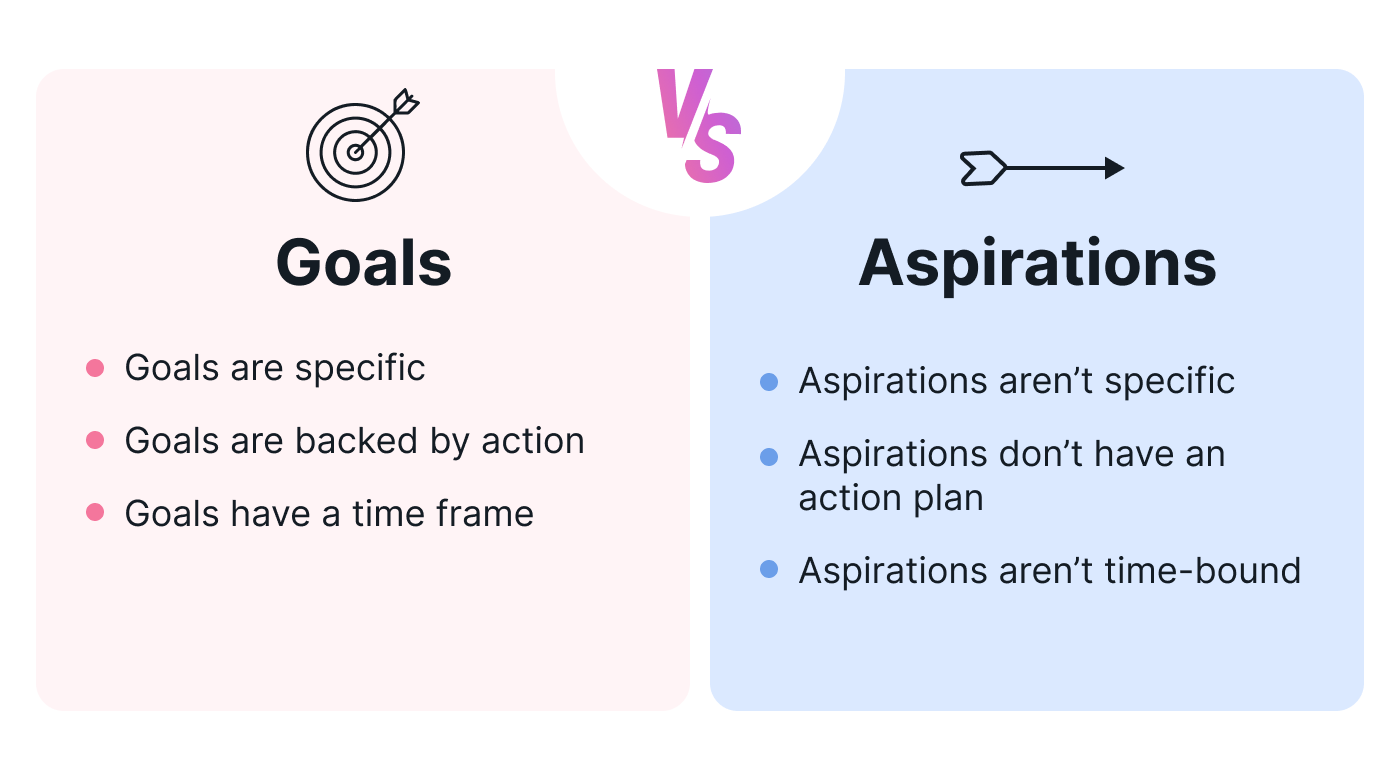 |
The main differences between goals and aspirations are as follows:
- Goals are more specific than aspirations and often have numbers linked to them. For example, whereas a goal would look something like, “We want to host an online summit for 2,000 attendees by the end of March,” an aspiration would be, “We want to host a summit.”
- Goals are backed by action and have detailed tasks to attain them. Aspirations, on the other hand, are often thought of as dreams or wishful thinking since they don’t involve a plan for reaching them.
- Goals have a specific time frame and are often bound to a particular date. That way, the person knows precisely how much time they have to reach the deadline. By contrast, aspirations don’t have to be achieved in a specific period.
What’s the difference between short- and long-term goals?
Like aspirations, there are differences between short and long-term goals. Here are a few of them:
- Time frame: A short-term goal is an objective you want to achieve relatively soon, perhaps in a few days, a week, a month, or a year. A long-term goal is a larger objective you want to achieve in the distant future, usually in the next 5 to 10 years. Long-term goals require more planning and patience due to their longer time frames.
- Flexibility: Due to their specificity, short-term goals are less flexible than long-term goals. This is because smaller goals have more precise tasks and urgent deadlines. Long-term goals have broader timelines, and specific aspects of your life or business can quickly impact them — making them more flexible.
- The number of goals: You can have several short-term goals simultaneously. Most long-term goals consist of various short-term goals that make the process of reaching the long-term objective easier. By contrast, you will likely only have a minimal number of long-term goals since they’re more significant and far more daunting.
- Difficulty: It’s far easier to achieve short-term goals since it’s easier to track their progress and gain prompt feedback on them. Long-term goals are more difficult to reach since they take longer, their success often only measurable in years. This makes it more likely for people to give up on them along the way.
Why are short-term goals crucial to business success?
Unfortunately, around 80% of people never set goals. Yet, setting goals can mean the difference between success and failure — for individuals and businesses alike.
Here are some of the primary advantages of setting short-term goals for you and your team to reach deadlines and satisfy clients:
1. Gives you and your team greater focus
Setting short-term goals will give your employees greater focus and direction. They’ll know what needs to be done and by when since they’ll have a clear plan in place with actionable steps to follow.
This will increase their motivation and make it less likely that they will become overwhelmed or confused. They’ll also be able to organize their days more efficiently since they’ll know which tasks to prioritize and when.
2. Pushes employees to overcome procrastination
Studies find that 20% of adult men and women worldwide are chronic procrastinators. This means that a fifth of your employees are likely to procrastinate when they don’t have a clear plan of action.
 |
You can help stop your employees from procrastinating by giving them a specific and time-bound goal so that they know what tasks need to be taken care of and by when.
3. Helps manage time effectively
Defined deadlines will give your employees a clear indication of the duties that need to be completed during different phases of a project so it can progress to the next stage.
If they know a project needs to be completed by a specific date, they can use that deadline to determine when each subtask needs to be done.
This will help them manage their time better so that they don’t end up damaging their work-life balance. Instead, they’ll have enough time to complete their work and home life responsibilities.
Discover 12 effective time management strategies you can use in your business.
4. Gives quick feedback
Short-term goals give you the ability to get instant and insightful feedback instead of having to bank on the success of a long-term goal that could take years to reach.
These smaller milestones provide consistent updates on how your project is going and can help bring to light any obstacles or risks that could prevent you from reaching your long-term objective.
You’ll be able to see the gains you’re making toward your bigger vision — which will build the confidence of all employees involved.
5. Creates productive behavior patterns
Having a clear plan of action will not only help your employees overcome procrastination, but it’ll also make them more productive. There’s clear researchthat shows that the “way” a goal is pursued directly affects how effectively behavioral change takes root.
With clear and well-articulated short term goals, individuals are likely to be more efficient and complete an optimal number of tasks, which then reinforces that behavior. Eventually, their output will align with their and the company’s expectations.
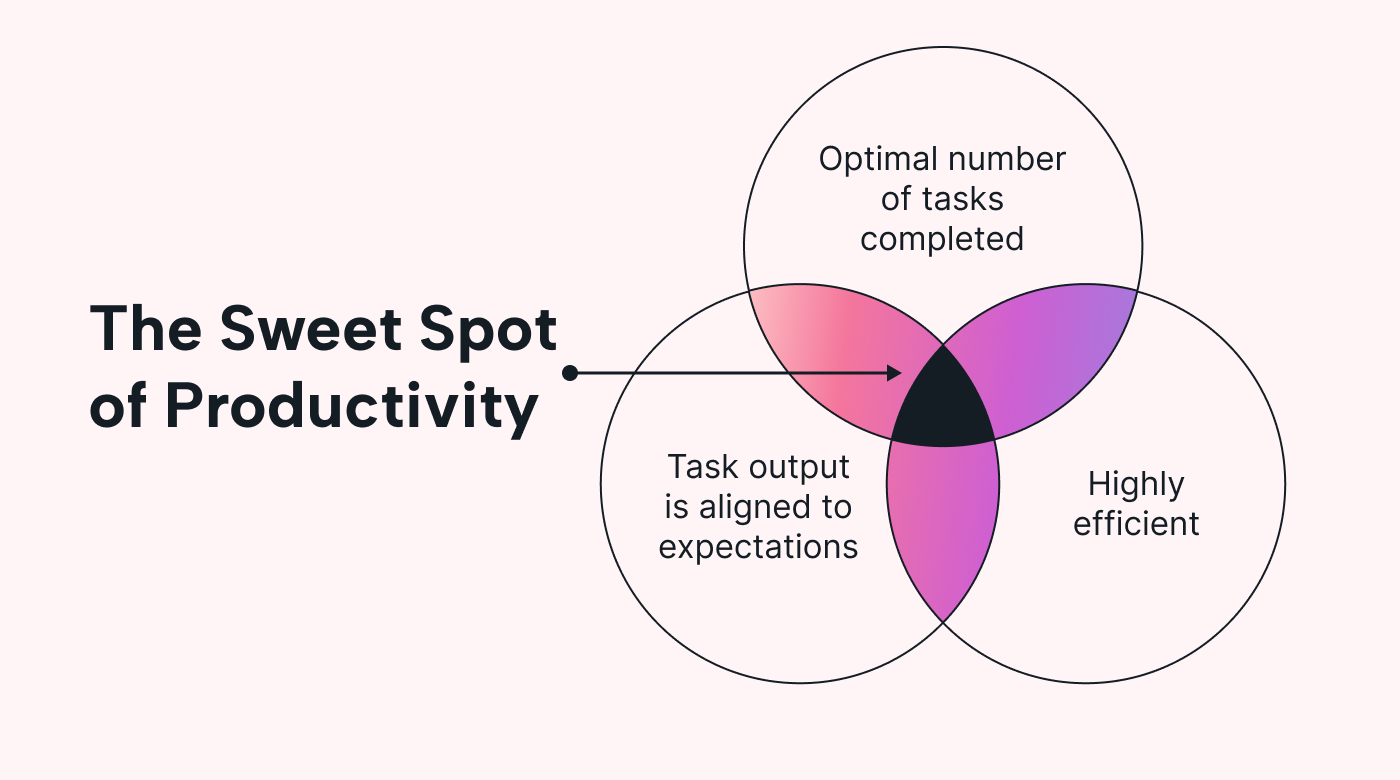 |
In some cases, more productivity can even lead to higher employee satisfaction since they feel like they’re making a difference and doing a good job.
Examples of short-term goals for your business
Now that you understand the importance of short-term goals for your business, you’re probably wondering what these goals should look like.
Here are 23 examples of short-term business goals:
- Grow the business’s Instagram following to 1,000 followers in one month.
- Leave the job site at 6 pm every day for two weeks for a better work-life balance.
- Publish eight blog posts in one month to increase web traffic.
- Increase service prices by 3% over the next six months.
- Increase quarterly sales revenue by 5%.
- Make sure staff capacity remains at 120% for the summer season.
- Plan and begin an employee rewards program by the end of April.
- Enhance customer satisfaction over the next quarter.
- Hire three new employees over the next three months.
- Run a weekly giveaway campaign on Facebook for one month to increase brand awareness.
- Offer a training program for outbound sales associates to increase conversions by 10%.
- Implement an “Employee of the Month” program by June 30.
- Create a LinkedIn business page, and post on it thrice weekly over the next three months.
- Get your business site on the first page of Google within the next year.
- Launch a new product or service within six months.
- Get 50 customer reviews in three months.
- Host a team-building weekend at the end of November.
- Automate 40% of payroll duties by implementing AI accounting software by August 31.
- Decrease the costs of goods by 10% this quarter.
- Allocate 15% of the human resources budget to communication and leadership training.
- Increase the first reply time by 3% by the end of this month.
- Increase the number of cold calls from five to 20 per day.
- Give 2% of the company’s monthly income to charity for a year.
You can also set professional development goals to become a better leader, which could positively affect your employee attrition rate. According to Statista, 34% of employees leave their jobs due to uninspiring leaders.
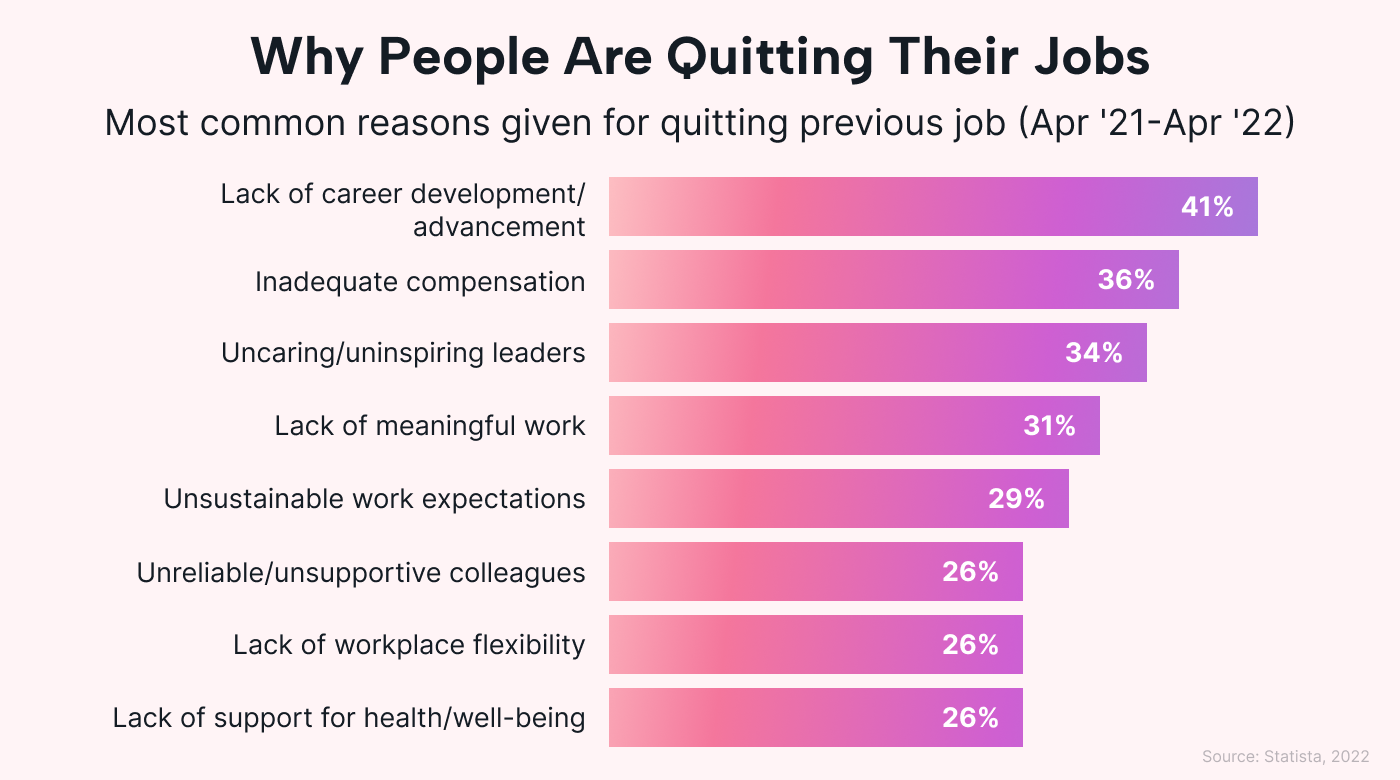 |
So being a good manager or team leader could inspire your employees to work harder and stay with your company.
Examples of professional development goals include the following:
- Take a three-month advanced management course to develop your skills.
- Attend four additional staff meetings per month.
- Increase the level of productivity through time management strategies.
- Earn a new certificate within one year.
- Build your network with 20 professionals in three months.
- Read one business or personal development book per week for three months.
- Speed up your morning routine and get to work 20 minutes early every day for two weeks.
Luckily, you can manage both your individual and team goals with Motion. Motion allows you to sync your personal and team goals so you can have all your tasks in one place.
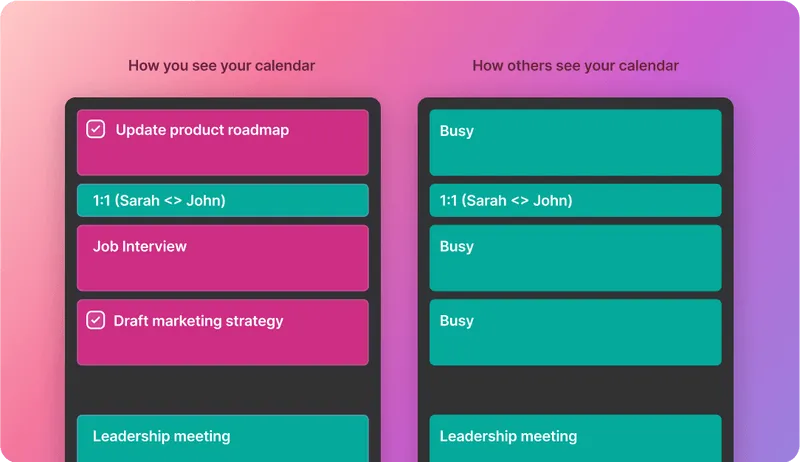 |
This makes keeping track of your work and personal tasks easy with the click of a few buttons. You’ll never feel overwhelmed or confused again.
How to set short-term business goals
Follow the four steps below to set strategic and achievable short-term goals for your business.
1. Determine key focus areas for your business
Look at areas of your company that need improvement or in which you’d like to succeed. It’s best to consider areas with quantifiable results so that you can measure performance metrics throughout the process.
Make sure you focus on something that affects your business’s growth and success, such as its profitability, market share, or customer satisfaction. These types of goals will have KPIs that you can track, such as CLV (customer lifetime value), NPS (net promoter score), and ETR (employee turnover rate), to name a few.
Areas that make the best candidates for immediate improvement are ones that directly impact revenue.
For example, you may consider creating a training overhaul or implementing new sales training. While it costs money to do this, it has a direct, quantifiable impact to bottom-line revenue because offering training programs to sales employees means they’re better able to convert leads into sales.
And this increases the business’s overall profitability as a result.
2. Visualize the end result
Now that you’ve identified the area you want to focus on, you’ll need to set a short-term goal. The first step in creating such a goal is to know what you’d like to achieve by the end of it.
Keep in mind that short-term goals are often linked to more important long-term goals. Thus, you’ll be able to use your long-term goal as the guiding light.
3. Reverse-engineer the goal
Once you have an endgame (or long-term goal) in mind, you can work your way backward to determine which steps you need to implement to achieve it.
Do this by breaking your long-term goal into short-term goals and then breaking those goals into manageable tasks.
For example, if your long-term goal is to expand your company to 500 employees within the next 5 years, you’ll need to set short-term goals, such as hiring 100 new employees per year, creating employee awards programs for higher retention, and adjusting infrastructure and operations to support this growth.
Then, based on these three "short-term goals, you can formulate smaller, actionable tasks by quarter, month, and even week. This type of visibility will also help you understand the key stakeholders you can delegate tasks to and provide clear benchmarks for success.
4. Use the SMART formula and the OKR framework
Making your short-term goals as specific as possible is essential because, as mentioned earlier, a goal that isn’t specific and doesn’t have a timeline isn’t a goal but an aspiration.
Making sure your goal has a focus and can be measured will ultimately determine its success since you’ll have a clear path toward reaching it and a way of measuring results.
This is where the SMART goal method comes into play.
The SMART framework is a popular goal-setting technique that people have adopted worldwide.
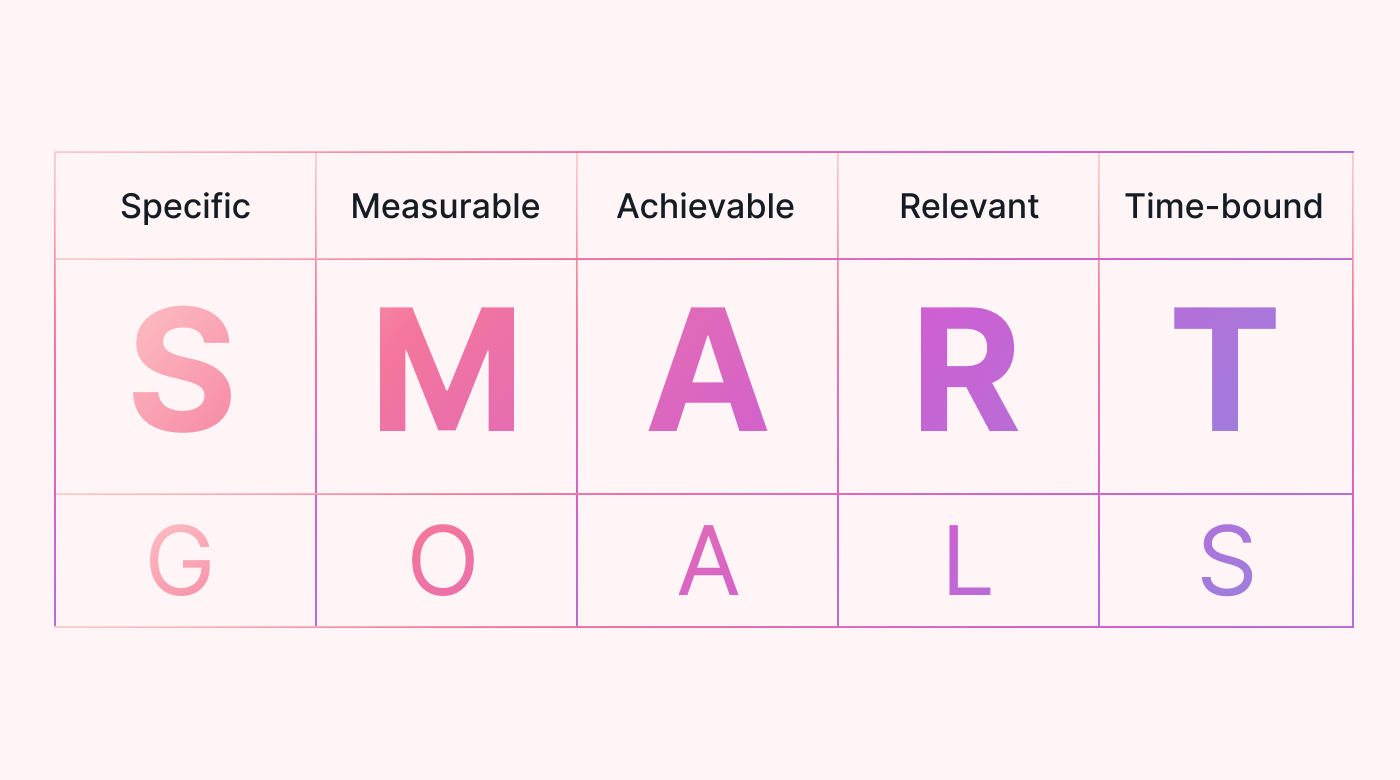 |
With this framework, you can ensure your goals are specific, measurable, achievable, relevant, and time-bound.
You can also use the objectives and key results (OKR) strategy, which allows you to create actionable stepping stones that’ll serve as a “roadmap” to attaining your goals.
In the OKR framework:
- The objective is the short-term goal you want to achieve.
- The key results are the smaller action steps (or tasks) that you must take to achieve the goal.
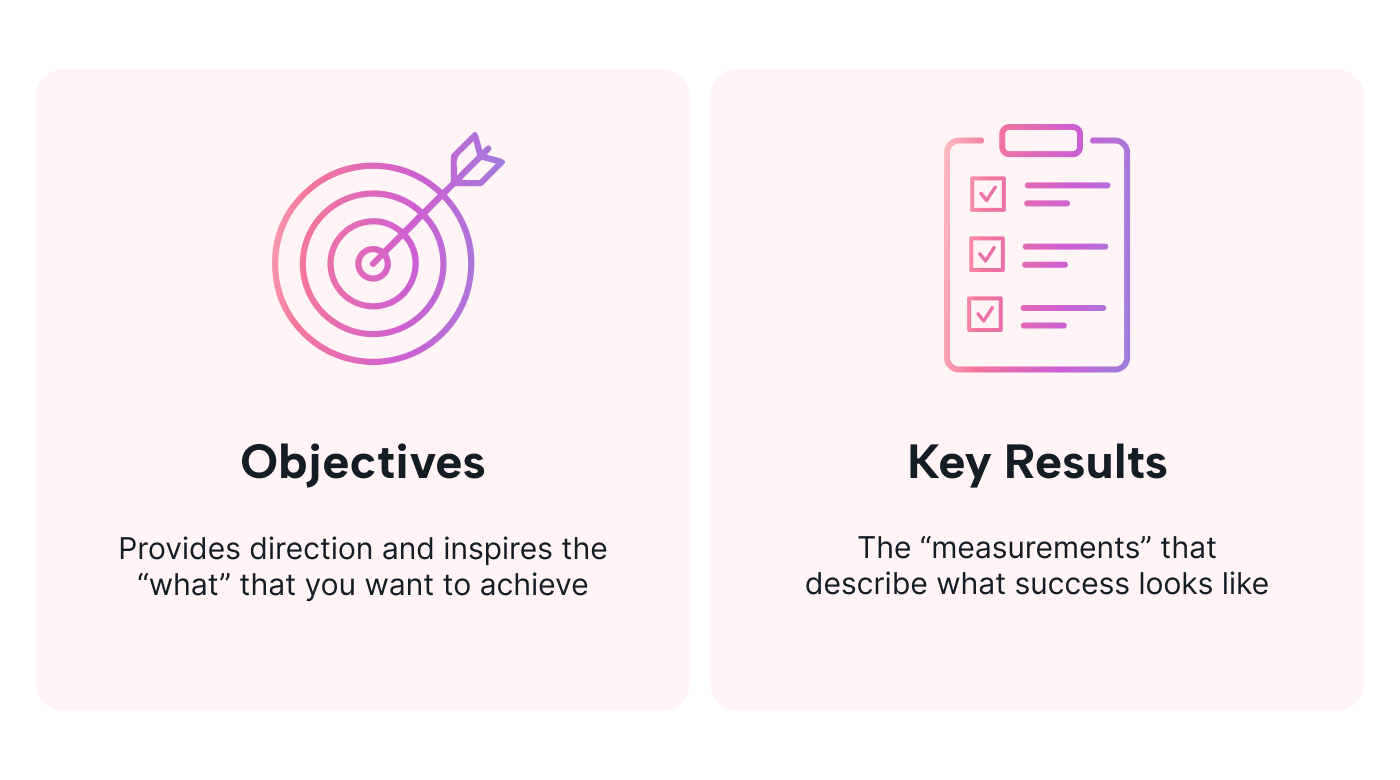 |
By thinking of the actions that’ll need to be taken to achieve each short-term goal, you’ll be able to provide your employees with a detailed action plan for every project.
How to track your goals so you can achieve them
All goals need to be tracked.
This is especially essential for businesses with employees in the field who need to meet specific deadlines or a certain amount of sales.
For example, construction companies may set a short-term goal for their workers to lay the foundation of a building. To achieve this goal, the construction workers will need to track their tasks, such as excavation and footing installation, to ensure that they can get to the next part of the process on time.
Helping employees track their progress will directly impact your company’s performance since your employees will know exactly what’s expected of them.
Here are three excellent strategies you can use to track your goals:
- Communicate progress: Make sure your employees communicate with management and vice versa so there’s no confusion about the status of the goal and who’s contributing to it.
- Create project milestones, and celebrate hitting them: As your team progresses, it’s important to celebrate each milestone that’s hit. This will motivate your employees and help ensure that the larger objectives are reached.
 |
- Use software to manage your goals: You can use Motion to manage your goals by connecting your team’s work in one place. This way, your entire team will fully understand the project’s status. With Motion, you can set daily or weekly goals and even set the urgency of each task so workers know when they need to work faster to stay on track.
Ready to create achievable short-term goals?
Short-term goals pave the way to success in your professional life and business.
By following the steps and strategies outlined above, you can create short-term goals that are both measurable and achievable. Furthermore, if you’re a manager, you can set goals for both yourself and your employees to get projects done more efficiently.
Are you or your employees struggling to achieve short-term goals because you simply don’t have enough time to finish the work? Discover how Motion users complete their work two hours faster every day.






